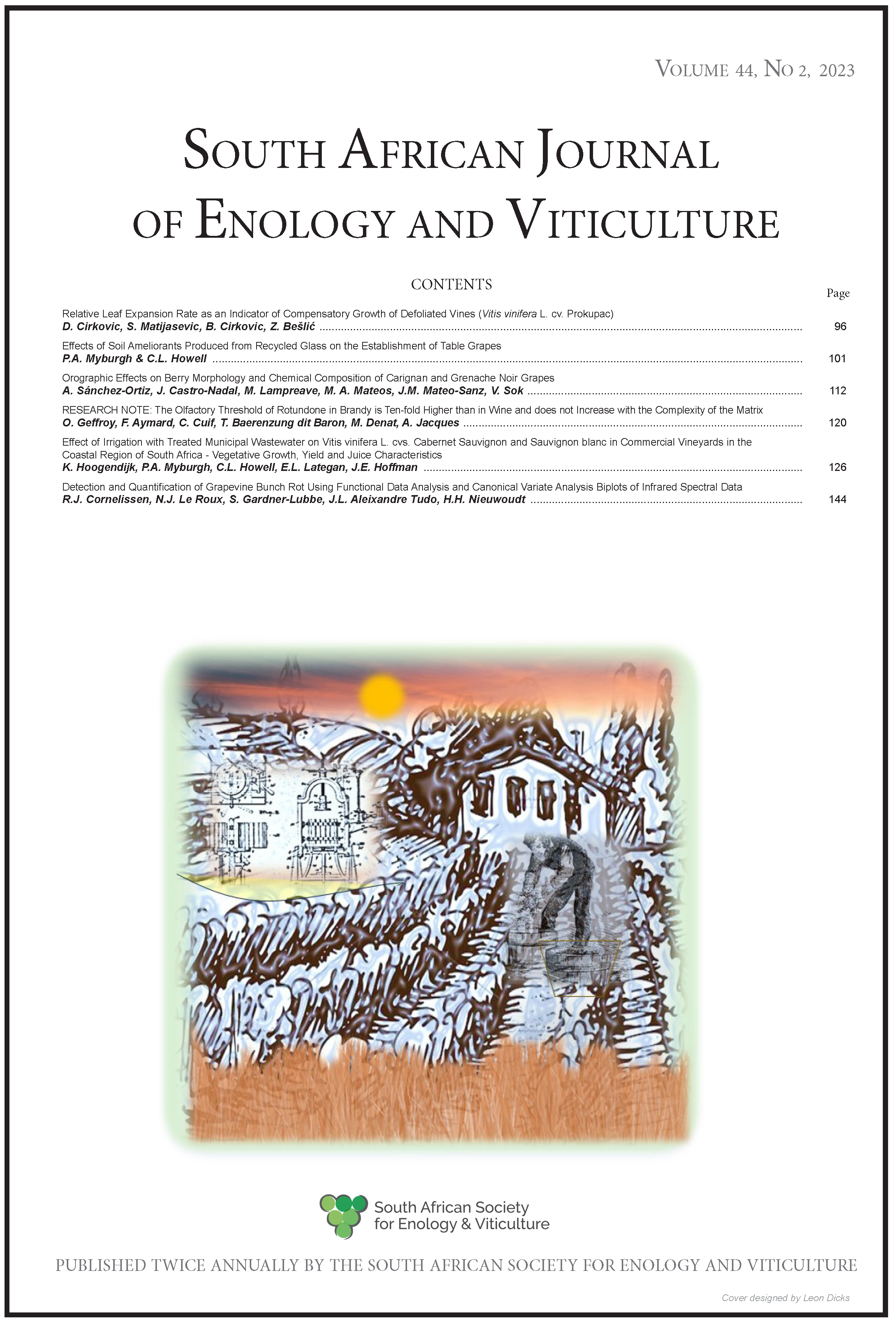The Olfactory Threshold of Rotundone in Brandy is Ten-fold Higher than in Wine and does not Increase with the Complexity of the Matrix
DOI:
https://doi.org/10.21548/44-2-5830Abstract
Rotundone is the only known aroma compound imparting a peppery aroma to wine. Its presence has
recently been documented in spirits, notably those aged in oak barrels. However, the sensory contribution
of rotundone in such alcoholic beverages remains hard to predict, given their high ethanol level. The aim
of this study was to estimate olfactory thresholds for rotundone in brandy using three different matrices.
Rotundone concentrations in the unspiked samples were 50 ng/L for wine distillate and 135 ng/L for brandy,
demonstrating for the first time the presence of rotundone in such spirits and a possible endogenous origin.
The olfactory detection threshold was estimated at 103 ng/L in 40% (v/v) ethanol solution, while difference
thresholds were 171 ng/L and 189 ng/L in fresh wine distillate and young French brandy, respectively, both
standardised at 40% (v/v). These thresholds were 10-fold higher than in wines and did not significantly
differ according to the complexity of the matrix. Our results, which are still preliminary and would deserve
to be validated with a larger number of samples and using a higher number of panellists, open new fields
of investigation for a deeper exploration of the concentration range of rotundone in brandies, particularly
those that underwent a longer ageing period in barrels.
Downloads
Downloads
Published
Issue
Section
License
A copyright form will be e-mailed to the corresponding author when the manuscript has been accepted for publication.
In principle, the Author agrees to the following when he/she signes the copyright agreement:
I hereby assign to the SOUTH AFRICAN SOCIETY FOR ENOLOGY AND VITICULTURE (SASEV) the copyright of the text, tables, figures, supplementary material, illustrations and other information (the Material) submitted with the manuscript to be published in SOUTH AFRICAN JOURNAL OF ENOLOGY AND VITICULTURE (SAJEV) (the "Article"). The copyright becomes effective from the date the Article has been accepted for publication in SAJEV.
This is an open access journal, and the authors and journal should be properly acknowledged, when works are cited.
Author's may use the publishers version for teaching purposes, in books, theses, dissertations, conferences and conference papers.
A copy of the authors' publishers version may also be hosted on the following websites:
- Non-commercial personal webpage or blog.
- Institutional webpage.
- Authors Institutional Repository.
The following notice should accompany such a posting on the website: This is an electronic version of an article published in SAJEV, Volume XXX, number XXX, pages XXX - XXX, DOI. Authors should also supply a hyperlink to the original paper or indicate where the original paper (www.journals.ac.za/index.php/sajev/) may be found.
Authors publishers version, affiliated with the Stellenbosch University will be automatically deposited in the University's Institutional Repository SUNScholar.
Articles as a whole, may not be re-published with another journal.
The following license applies:
Attribution CC BY-NC-ND 4.0

